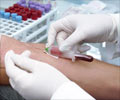The control of hepatitis is a raging problem worldwide. Nearly 500 million people are victims of Hepatitis worldwide, which gives an idea of the enormity of the problem. Breaking it down to an understandable estimate, it is one in every 12 people worldwide, suffering the disease.
Hepatitis is a disease that is caused due to inflammation of liver cells, leading to damage of the liver. The main cause behind Hepatitis is the ‘Hepatitis Virus’, although triggers in other forms exist such as -bacterial infections, intake of drugs, and excessive alcohol.A recent report has estimated that the havoc caused by the hepatitis virus- Hep C or HCV which led to an increase in the number of deaths by 123 percent in the United States.
Peek into the Condition
Viral hepatitis, as the name suggests is triggered by a virus that causes inflammation of liver cells. Many different viruses - hepatitis A, B, C, D, and E are behind the attack of viral hepatitis.
Hepatitis B, C, and D can cause chronic hepatitis that can even last a lifetime. The dangerous part about these viruses is that in some cases it could lead to life threatening conditions such as liver cancer, liver failure and cirrhosis.
The symptoms of viral hepatitis manifest in some victims. Some of them may not portray any symptoms. However, common symptoms are:
- Fatigue
- Low grade fever
- Loss of appetite
- Nausea
- Vomiting
- Diarrhea
The vulnerability to Hepatitis A increases with frequent travel to international locations, sex with an infected person, exposure to regions where vaccinations are uncommon. Vaccination for children between 12 and 23 months is recommended as a good prevention measure.
Hepatitis B caused by the HBV virus is the most dangerous, triggering chronic liver infection. Nearly 10% of Hepatitis B victims battle long term liver infection. In many cases, Hepatitis B causes irreparable liver damage, leading to death. This disease, considered far more contagious than AIDS, is spread by infected blood, vaginal secretions, seminal fluid, saliva, open wounds and breast milk. It can also be conveyed from mother to a child during delivery, irrespective of the type of delivery. Sex with an infected person also causes its spread.
International travelers, sex with multiple partners, homosexuals, injection drug users, and babies born to infected mothers are at high risk of hepatitis B.
The hepatitis B vaccine affords effective protection against the attack of the virus. Not sharing of personal items with infected persons can reduce the level of transmission. Treatment generally employs the use of medication such as alpha interferon and peginterferon that arrest the proliferation of the virus in the body, and strengthen the immune system.
Hepatitis C, caused by the HCV virus, is a blood-borne infectious disease. Almost 200 million people worldwide are infected by the HCV virus, making it the most common disease in the world, also called an ‘epidemic’ by the WHO.
The virus can be traced in the blood of victims, though the scary part is its ‘silence’- Many victims could be carrying the virus and display no symptoms at all. This is doubly risky, as they could transmit the virus to others. Nearly 20-30% of those suffering chronic Hepatitis C go on to battling life threatening liver conditions, says the Center for Disease Control.
The HCV virus is transmitted after contact with impure blood products, which makes injection users at increased risk of infection. In rare cases, it can also be transmitted through childbirth and sexual contact. Infact one of the leading causes for liver transplantation is Hepatitis C.
In the absence of a vaccine for hepatitis C, the only strategy to prevent this disease is to minimize exposure to the virus by mitigating the risks. The risks manifest in shared needles and personal items, which should be avoided.
Researchers have also tried to understand the link between hepatitis C and fatty liver disease, a significant risk for life threatening liver ailments like liver cancer and cirrhosis.
An enzyme which is thought to play a pivotal role in the production of lipids, called fatty acid synthase (FAS), was found in ample measure in the human liver cells, exposed to the hepatitis C infection.
Since it is does not portray any symptoms, victims get to know of the disease only when they suffer liver failure, many years after the infection has set in.
Hepatitis D is transmitted through contact with infected blood. Those who are infected with hepatitis B are at risk of Hepatitis D. Injection drug users are also highly vulnerable to this infection.
Hepatitis E is mainly transmitted through food or water contaminated by the excreted waste of an infected person. International travelers, and those who live in hepatitis prone areas, especially where vaccination for hepatitis is uncommon, are at risk of infection.
Adopting proper hygiene and sanitation and avoiding consumption of water from taps may be a good way to reduce the risk of infection.
Prevention always better than cure
Nearly 75% of hepatitis sufferers live in Asia. The overriding reason for the spread is the lack of awareness of the disease and its prevention.
Providing basic facilities like safe drinking water, proper sanitation, and healthcare services are imperative to prevent Hepatitis. Washing hands thoroughly after using the toilet, consuming clean food that is protected from flies and drinking clean water are some of the precautionary measures to be taken. It is also important to practice safe sex, and ensure injection equipments are sterile before use.
Way to Go
India has taken a step in the right direction by including Hepatitis B as part of the immunization schedule for all newborns. Effective blood screening methods have been put in place in order to improve the quality of donor blood. These measures suggest that India is on the right track to control the spread of Hepatitis.
Cure of Hepatitis rests on timely diagnosis and effective treatment. Therefore, what is most important in defeating the disease is Being Aware of the disease in its entirety, which includes causes, symptoms and prevention.
Source-Medindia
SAVITHA/K












